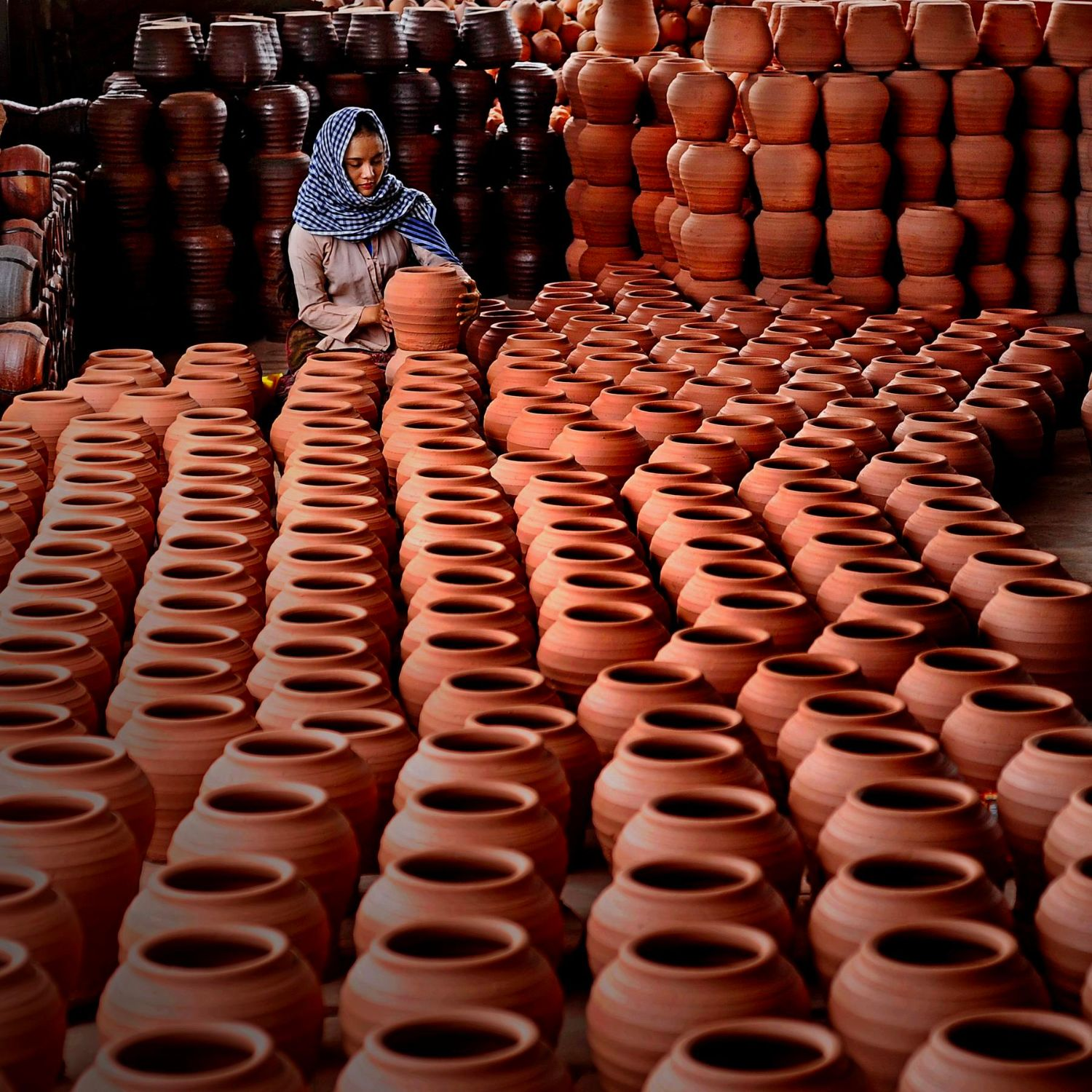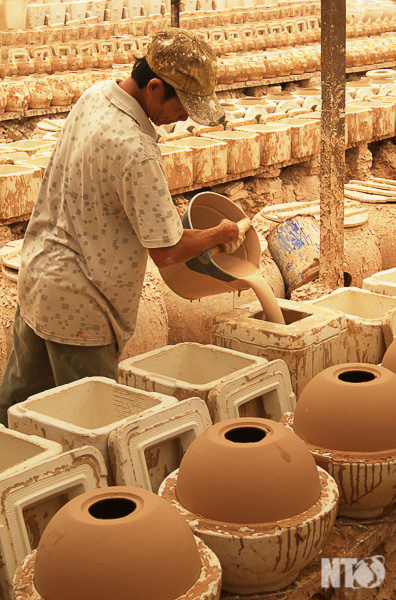The History of Binh Duong's Ceramic Craft Villages
Binh Duong's ceramic craft industry began to take shape and develop in the late 19th century. In its early stages, the main products of Binh Duong's ceramics were dishes, bowls, vases, teapots, earthenware pots, and tea containers, all influenced by Fujian ceramics.
The history of Binh Duong ceramics can be divided into four stages:
- Formation and Development Stage (1867 - 1945): During this period, the province had around 40 ceramic workshops, with the largest one located in Lai Thieu. This workshop primarily produced ceramics for the southern region of Vietnam.
- Prosperous Stage (1945 - 1975): During this period, Binh Duong ceramics began to produce decorative ceramics to meet the high-end demands both domestically and internationally.
- Application of Science and Technology Stage (1975 - 1986): Binh Duong ceramics entered a phase of modern production technology, replacing traditional kilns with electric kilns. This period saw improvements in product design, artistic decorations, glaze colors, clay quality, and overall product quality. Smaller workshops faced challenges during this transition.
- Redevelopment and Expansion Stage (1986 to Present): Binh Duong has produced prominent ceramic brands like Minh Long, Minh Phat, and Cuong Phat, known for their high-quality products. These ceramics are highly sought after in European, Japanese, and American markets.

Ceramic Production Process in Binh Duong
The ceramic production process involves several detailed steps, including:
Stage 1: Selection and Processing of Raw Clay.
Stage 2: Shaping the Product.
Stage 3: Product Decoration. This stage involves several detailed steps, including glazing, painting, and the application of artistic patterns.
Stage 4: Initial Product Finishing. During this stage, ceramic products are fired at low temperatures and glazed.
Stage 5: Final Product Finishing. In this stage, ceramics are fired at high temperatures according to specific quality standards.
Ceramic Craft Villages in Binh Duong
Currently, Binh Duong has three ceramic craft villages:
Tan Phuoc Khanh Ceramic Village
Located in Tan Uyen Town, Tan Uyen District, Binh Duong Province, Tan Phuoc Khanh Ceramic Village is known for its characteristic green or mottled brown glazes. The village produces various items such as bowls, dishes, teapots, flowerpots, vases, and more.

Lai Thieu Ceramic Village
Situated in Lai Thieu Ward, Thuan An City, Binh Duong Province, Lai Thieu Ceramic Village was prominent during the 20th century, producing household items like bowls, large bowls, dishes, plates, pots, and ceremonial items. Today, a few families still practice the traditional craft, mainly focusing on pots and ceramic pigs.

Ba Lua Ceramic Village
Also known as Chanh Nghia Ceramic Village, Ba Lua Ceramic Village is located in Chanh Nghia Ward, Thuan An City, Binh Duong Province. The distinctive feature of Ba Lua ceramics is their glaze, often either transparent or opaque white.

Binh Duong ceramics have embraced modern machinery and advanced production lines, resulting in refined and high-quality products. If you have the opportunity to visit these ceramic craft villages in Binh Duong, consider purchasing handmade ceramic products as gifts for your loved ones, friends, or for decorating your own home.








